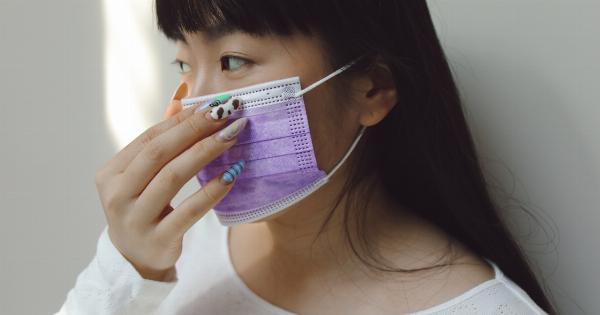Wearing contact lenses has become a popular alternative for people who desire clear vision without glasses. While contact lenses can be convenient and comfortable, they also require proper care and maintenance to prevent potential eye damage.
Habit 1: Sleeping with Contact Lenses
One of the most common habits that increases the risk of eye damage when wearing contact lenses is sleeping with them.
It is important to understand that the cornea, which is the outer layer of the eye, gets oxygen supply through the tear layer on the surface of the eye. During the day, contact lens wearers blink frequently which helps to keep the oxygen flow going. However, at night while sleeping, there is reduced tear flow and hence lower oxygen supply.
This makes the cornea more vulnerable to various types of complications when contact lenses are left in while sleeping, such as corneal ulcers, infections, and even loss of vision. Additionally, debris and bacteria from your eyes can also build up on the contact lenses overnight and increase the risk of infections or other issues in the morning.
Habit 2: Failing to Clean and Replace Contact Lenses Properly
The second most common habit is failing to clean and replace the contact lenses properly. Contact lenses are not meant to last indefinitely; they have a lifespan after which they should be discarded.
Failing to replace them not only increases the risk of wear and tear but also allows potentially harmful bacteria to accumulate on the surface. It is important to note that contact lenses can also accumulate harmful bacteria and debris if not cleaned properly before and after each use. This bacteria and debris can cause eye discomfort, bacterial infections, and sometimes corneal ulcers.
How to Reduce the Risk of Eye Damage When Wearing Contact Lenses
Fortunately, there are several steps that you can take to reduce the risk of eye damage when wearing contact lenses:.
Step 1: Follow the Replacement Schedule
It is crucial to follow the replacement schedule provided by the contact lens manufacturer or your eye care specialist. This will ensure that your lenses are always fresh and clean, ensuring good lens hygiene.
Step 2: Clean your Contact Lenses Properly
Always clean your contact lenses with a cleaning solution prescribed by your eye care specialist. Never store your contact lenses in plain water or saliva.
This is because tap water contains microorganisms that can cause eye infections and other severe conditions.
Step 3: Do not Sleep in Contact Lenses
Avoid sleeping while wearing your contact lenses. If you must sleep in them, ask your eye care specialist for specific lenses that are safe for overnight use.
Step 4: Handle your Lenses with Clean Hands
Keep your hands clean when handling your contact lenses. Always wash your hands with soap and water before touching them, and make sure to dry them with a lint-free towel.
Step 5: Keep your Contact Lens Case Clean
Keep your contact lens case clean. Replace it every 3-6 months, and always rinse it and dry it thoroughly after you use it. Store your contact lenses in separate cases to avoid mixing them up.
Step 6: Regular Eye Checkups
Have regular eye checkups with your eye care specialist. They will be able to detect any potential eye problems at an early stage.
Conclusion
Wearing contact lenses can provide convenience and comfort, but it is essential to take proper care of them to avoid eye damage.
Sleeping in contact lenses and failing to clean and replace them properly are two habits that can be avoided by following the steps mentioned above. Always remember to consult your eye care specialist if you experience any discomfort or complications with your contact lenses.






























